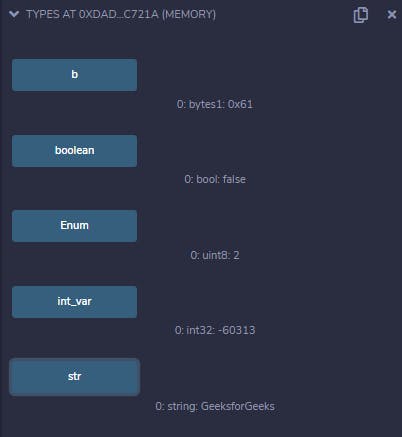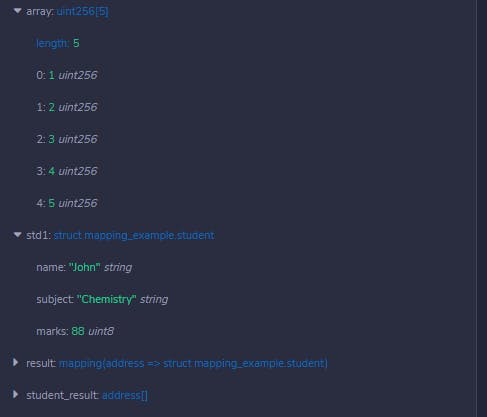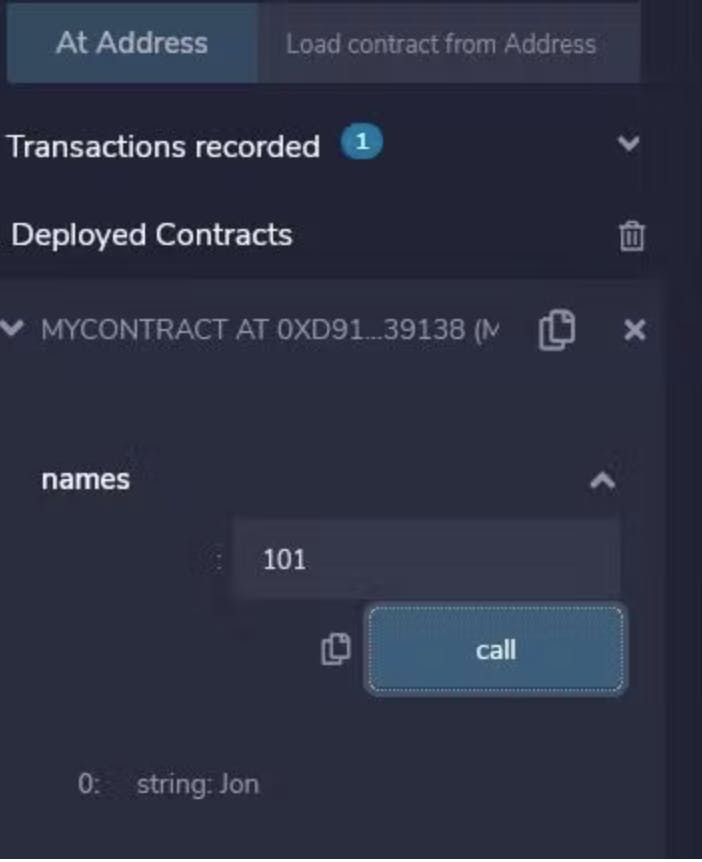Table of contents
No headings in the article.
Mapping is identical to a dictionary in every other language.
In Solidity, it is a hash table that is used to store information in the form of key-value pairs, where the key can be any of the built-in data types (other than reference types), and the value can be any type.
But what exactly do we mean by "data types" in solidity?
As a first step, you should know that solidity is a statically typed language, which requires you to explicitly state the type of every variable you use. Data types allow the compiler to check the correct usage of the variables.
Likewise other statically typed languages Solidity has value types and reference types which are defined below:
Value Types Data is persistent in value-type variables. You can think of these as the bare bones of solidity's data structure. These types of variables are always passed by value. The variables are copied wherever they are used in function arguments or assignment.
( Boolean | Integer | Fixed Point Numbers | Address | Bytes & Strings | Enums )
In the below example, the contract Types initializes the values of different types of Values Types:
// Solidity program to demonstrate
// value types
pragma solidity ^ 0.5.0;
// Creating a contract
contract Types {
// Initializing Bool variable
bool public boolean = false;
// Initializing Integer variable
int32 public int_var = -60313;
// Initializing String variable
string public str = "GeeksforGeeks";
// Initializing Byte variable
bytes1 public b = "a";
// Defining an enumerator
enum my_enum { geeks_, _for, _geeks }
// Defining a function to return
// values stored in an enumerator
function Enum() public pure returns(
my_enum) {
return my_enum._geeks;
}
}
Output:

Reference Types Reference type variables store the location of the data. They don’t share the data directly. With the help of reference type, two different variables can refer to the same location where any change in one variable can affect the other one.
( Arrays | Struct | Mapping ) In the below example, the contract Types initializes the values of various Reference Types.
// Solidity program to demonstrate
// Reference Types
pragma solidity ^0.4.18;
// Creating a contract
contract mapping_example {
// Defining an array
uint[5] public array
= [uint(1), 2, 3, 4, 5] ;
// Defining a Structure
struct student {
string name;
string subject;
uint8 marks;
}
// Creating a structure object
student public std1;
// Defining a function to return
// values of the elements of the structure
function structure() public view returns(
string memory, string memory, uint){
std1.name = "John";
std1.subject = "Chemistry";
std1.marks = 88;
return (
std1.name, std1.subject, std1.marks);
}
// Creating a mapping
mapping (address => student) result;
address[] student_result;
}
Output:

Following a quick review of data types, let's continue on mapping. Syntax of Mapping:
mapping(key => value) <access specifier> <name>;
You can also use nested mapping in the following way:
mapping(_KeyType => mapping(_KeyType => _ValueType)) public mappingName;
How does mapping work?
Below is a list of room numbers and the names of those staying in them. This table can be viewed as a key-value pair in which each set of "keys" corresponds to a different value.
Therefore, the answer to the question "What does 102 mean?" is "Sara."

How to create mapping?
pragma solidity ^0.8.4;
contract MyContract {
mapping(uint => string) public names;
}
You need to declare mapping with the mapping keyword, and then specify the data type for the key and the value. In this case, each key in the mapping will be a uint, and each corresponding value will be a string.
Before we deploy our smart contract to see how mapping works we add some data. To do that I will use the constructor function.
constructor() public {
names[101] = "Joe";
names[102] = "Sara";
names[103] = "Ahmad";
names[104] = "Rand";
}
}
Now you can deploy the simple smart contract in Remix to see how it works. Once the contract is deployed you can see mapping in action. To do that you need to provide a key and click on “call”.

In this example, we asked for value for key “101” and received “Jon”.
We've only scratched the surface of what mapping can do in solidity, but hopefully, this primer has been helpful. More applications of mapping will be discussed in subsequent articles.
References:
hackernoon.com/how-to-create-a-mapping-in-s..

